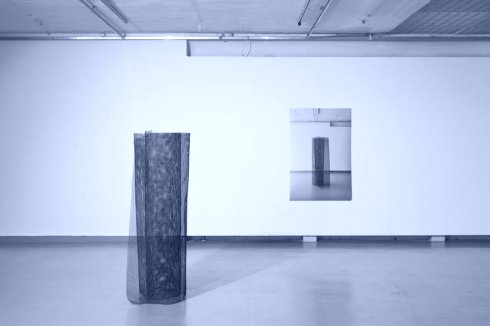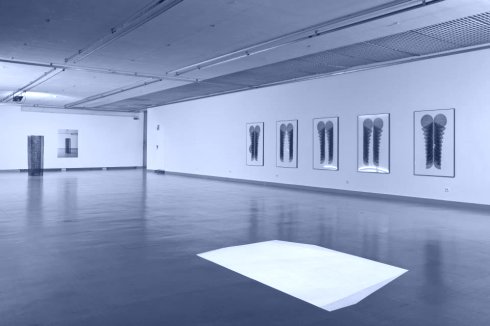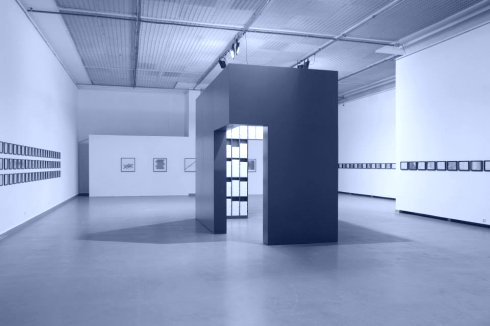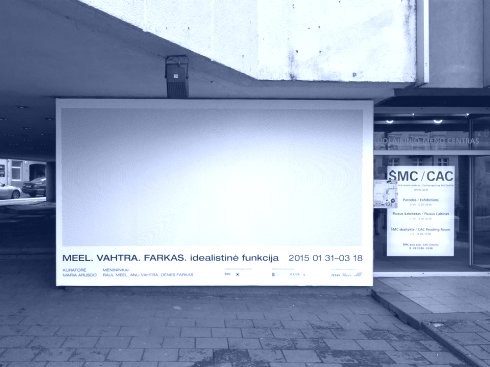MEEL. VAHTRA. FARKAS_idealistlik funktsioon
30.01 - 18.03.2015
MEEL. VAHTRA. FARKAS_ idealist function
Contemporary Art Centre, Vilnius (cac.lt)
An idealist once wondered how big is an idea, how big is a feeling, how much space a memory takes and then, suddenly, she was in many places at once. The exhibition MEEL. VAHTRA. FARKAS_ idealist function presents three Estonian artists from different generations whose work shares a common ground of spatial poetry.This idealist function is based on dialogue inspired by the first concrete poetry manuscript The Club (1968–1969) by Raul Meel.
Since the 1970s, the engineerturnedartist, Raul Meel has formed larger than life worlds with his typewriter and geometrical forms. In his bold, lively work, typed letters become figures telling various stories on love and life. Similarly to Meel, text and repetition are the essential basis for the work of Dénes Farkas, a carpenter turned photographer. Farkas’ method deconstructs sentences and, in turn, subjectively reshapes meanings, sometimes to the extent of becoming autobiographical.Whilst Meel and Farkas are rooted in language and word play, the work of photographerandinstallation artist Anu Vahtra is centred on spatial renditions. She creates site-specific installationsusing the grid as a method as well as an outcome.
All three artists obsessively seek a playful openness by producing serials of idealist functions (a title loaned from Raul Meel’s print in The Club series). Meel works to find a composition that expresses some kind of right until he comes up with an ideal balance. The Club consists of 63 typewriter drawings, of which each form a separate character and story. The individual word is exempt from the suppression of linear sentences. This inspirational manuscript from the late 1960s is one of the first artist books in Estonia. Another work by Raul Meel in that exhibition is Transformations of the Life (1972), which opened the typographic structures period in his oeuvre; the narrative depicts two figures in dialogue, in which the same geometrical circles are layered on top of each other creating a love-like poem.
Dénes Farkas is more focused on the impossibility of finding means of communication for transferring a pure thought from one to another. Whilst Meel in The Club series plays around with one word and its various meanings, Farkas narrates sentences and chapters. His library of 10,000 books is a fruitless attempt to find the meaning of life so as it is eighty framed books, where Bruce Duffy’s novel The World As I Found It is deconstructed into abstracts of a thought. Farkas renders his subjects into the organic abstraction with his new body of work, which has been created especially for this exhibition. Again he uses constant repetition of the same elements to create a matrix.
Anu Vahtra’s works play with our visual perceptions and the error of the camera lens and eyes, creating different realities through repetition. It draws from Raul Meel’s Transformation of the Life and at the same time is inspired by moiré patterns, which she finds in everyday environments. By illuminating the invisible particles, she transmutes and translates them to visible reality.
MEEL. VAHTRA. FARKAS_ idealist function is a three-way trialogue that aims to question simple and basic matters within the world inside and around us.Raul Meel, Anu Vahtra and Dénes Farkas have come together to create apoetry of the invisible, of infinite, unexpected possibilities in which knowledge of the world tends to dissolve the solidity of the world, leading to a perception of all that is infinitely in transformation.



